Case Study
American Geophysical Union
Washington, DC
Founded in 1919 with 60,000 members in 130 countries and Headquarters in Washington DC
The American Geophysical Union (AGU) is a not-for-profit scientific society dedicated to the discovery in Earth and space science for the benefit of humanity. Through scientific publications, meetings and events, science communication, policy updates and much more, AGU brings the scientific community together to advance their mission. AGU’s vision is to galvanize a community of Earth and space scientists that collaboratively advances and communicates science and its power to ensure a sustain future.

The Need for a New Headquarters
AGU has been based in Washington DC since it was formed in 1919 and in the early 1990’s a new larger office building was constructed. However by 2013 it was determined that it was time to renovate the 62,000 ft2 existing building as it had reached the end of its useful life. The design team chose to renovate rather than demolish the building as to reduce their environmental impact. “A building is a physical structure, but there is no reason why a building as a physical structure can’t embody the vision of an organization,” explains AGU CEO and Executive Director Christine McEntee. The new office space design reflects AGU’s mission of science for the benefit of humanity, showcasing their members work and values, promoting sustainable technologies and strategies that are brought together in a way that has not been seen before while educating the public about their positive impact”.
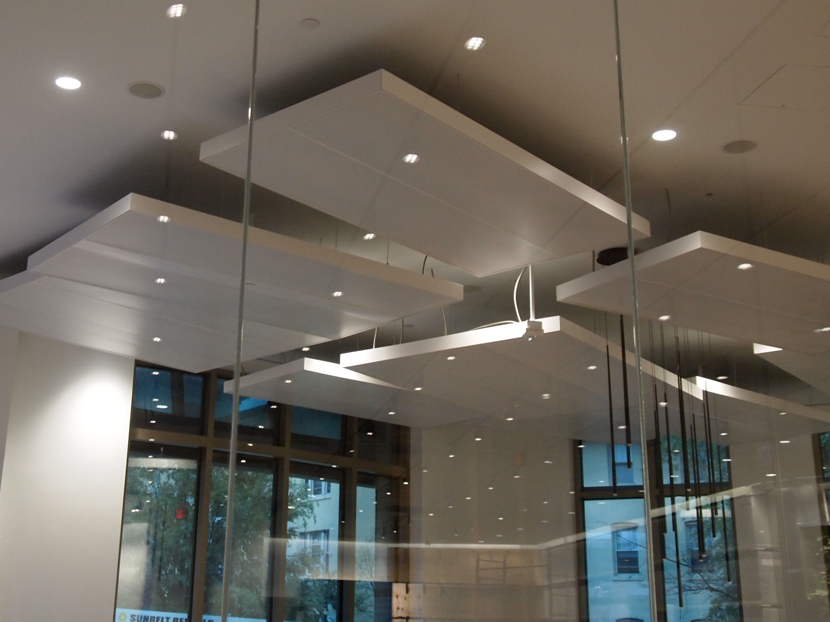
Beyond Energy & Atmosphere to Net Zero Energy
As is true with green building project, there is no one-size fits all solution for the AGU headquarters renovation. AGU incorporated a suite of innovative strategies to achieve their goal of net zero energy and is currently on track to earn all LEED v2009 Energy & Atmosphere points.
The renovation project provided the opportunity to lead by example as a model for sustainable design. A net zero energy design would mean that the total amount of energy used yearly by the building is equal to or less than the amount of energy createdon-site through the use of innovative technologies and renewable power generation. Net zero energy is an unprecedented sustainable goal for the urban office retrofit and is typically reserved for new construction projects. The Energy Use Intensity (EUI) indicator is used to measure a buildings total energy use. To go from AGU’s 1994 building EUI of 90 to a EUI of 0 or less the design team needed to incorporate aggressive and innovative strategies. LEED approaches energy from a holistic perspective: energy use reduction, energy-efficient design strategies, and renewable energy sources.
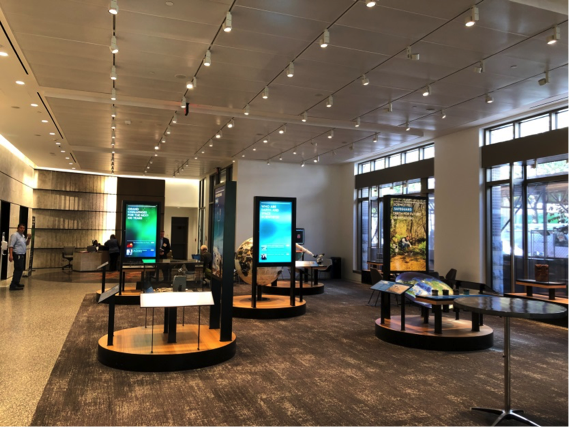
Explanation of Building Strategies
Generation
- Solar Photovoltaic Array
Reclamation
- Dedicated Outdoor Air System with Exhaust Air Heat Recovery
Absorption
- Storm water Collection and Reuse
- Municipal Sewer Heat Exchanger System
Reduction
-
Radiant Cooling Ceiling System
-
Enhanced Dynamic Glazing System
-
DC Powered Workspace and Lighting
-
Enhanced Envelope Insulation
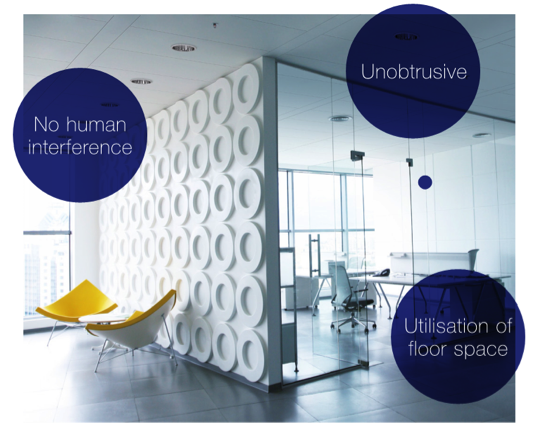
Energy Reduction
AGU started with ways to reduce the overall initial energy demand with a high performing building envelope, use of natural daylighting, and low-e, low reflective glass windows that reflect heat and help keep the interior cool. Energy efficient building control systems, improved insulation and low LED lighting were installed to help reduce energy needs. In addition, workstations are designed with limited loads, with average users sized for laptops and monitors. A Zehnder radiant cooling and heating ceiling system was selected to provide lower operating costs and increased occupant comfort. The radiant system circulates chilled/hot water through a network of pies in the ceiling panels to maintain spaces at comfortable temperature. The radiant panels produce a cooled ceiling surface that evenly absorbs heat energy transferred from people, lights, and equipment. The ventilation air is provided via a dedicated outdoor air system (DOAS) that works in conjunction with the radiant cooling system for ventilation, pressurization and humidity control.
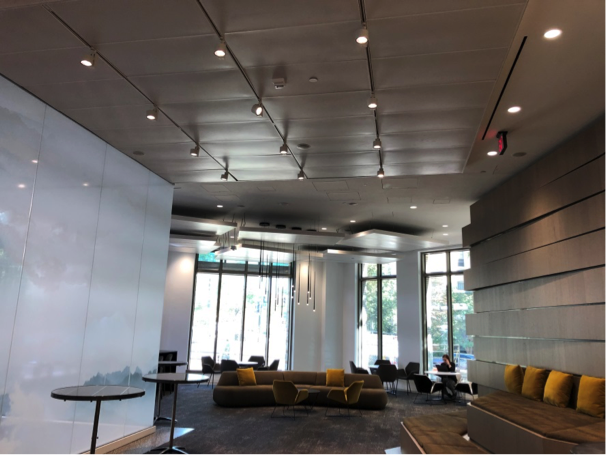
Thermal Comfort
A key advantage of radiant cooling & heating ceiling systems is during system design the panels can be positioned to ensure that occupants will realize a high level of thermal comfort throughout the space. An example of this would be positioning panels along the building perimeters, thus reducing or eliminating excessive temperatures on outer walls and ceilings. Spaces that traditionally use convective based systems lose their effectiveness as soon as they are switch off because they only heat/ cool the air and not the objects in the space. Radiant based systems utilize the principals of all objects absorb and reflect energy into the space, thus creating a comfortable environment for the occupants at all times. Moreover, conventional air systems allow distributed conditioned air to collect in areas where it is more likely to escape, along the ceiling or walls.
A common concern with radiant ceiling systems is the possibility of the “shadowing effect”. For example, occupant legs hidden from view under a table might potentially experience cold. However, the impact of this is negligible as the conditioned surfaces radiate heat/cool to the unconditioned surfaces to achieve a uniform temperature distribution.
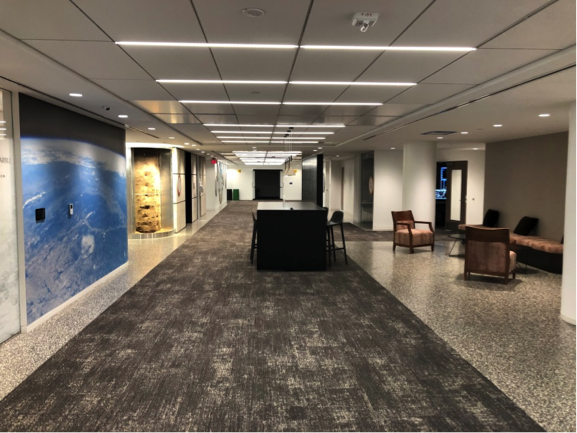
Space Utilizations
Radiant ceiling panels are seamlessly integrated into the ceiling designs such that building occupants don’t know they are there. The panels being passive are silent in operation and reduce the opportunity to spread air pollutants.
Radiant Panels are installed within the fabric of the ceiling thus making them unobtrusive and allow for making best use of the available floor space. As panels require minimum mounting distances from the building structure, they are ideal for low room heights or reducing plenum heights to increase room volume. Since the panels are installed in the ceiling, they are unlikely to be touched thus allowing a higher surface temperature which provides a higher thermal output.